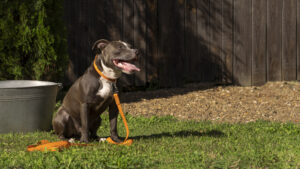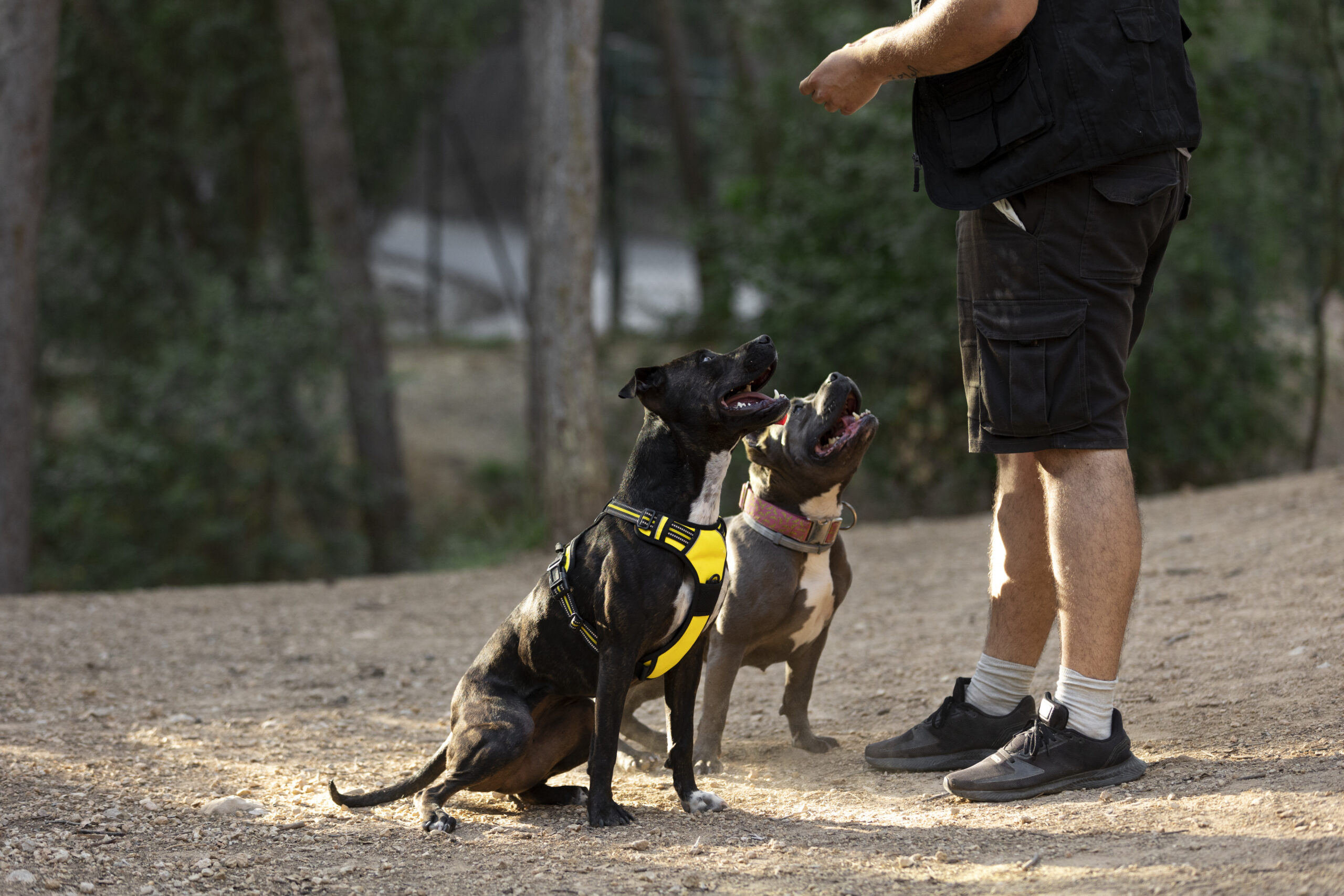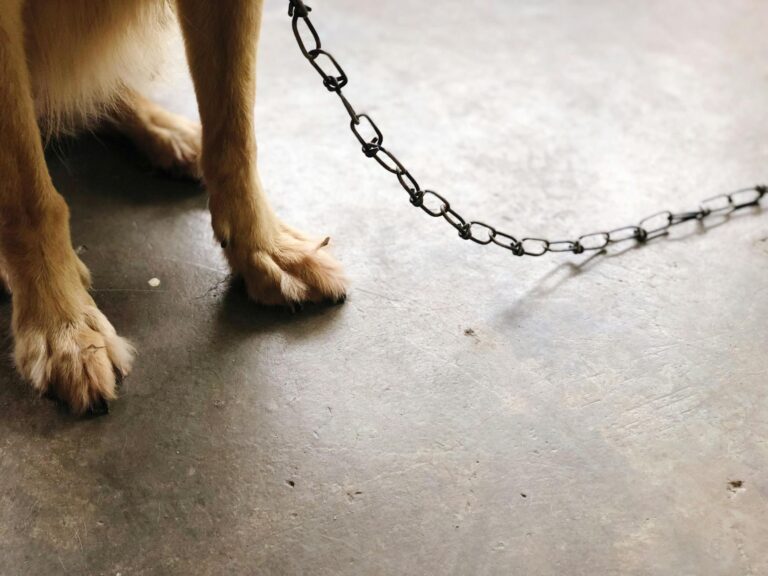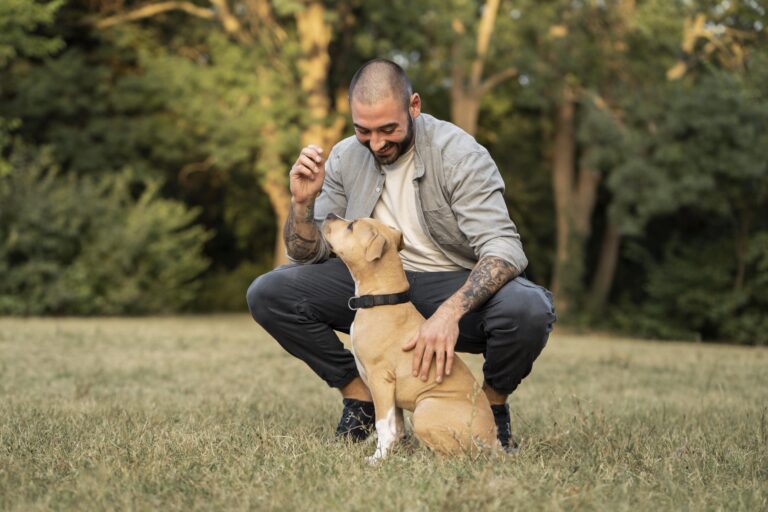Training Techniques For Rottweilers And Doberman Pinschers
Consider this: over the decades, Rottweilers and Doberman Pinschers have been both hailed as the epitome of loyalty and challenged by behavioral misconceptions. While these breeds are often misunderstood due to their protective instincts, they possess the potential for incredible companionship. Training these strong-willed dogs necessitates a more nuanced approach to managing aggression inherent in their protective nature.
Historically, Rottweilers and Dobermans were bred for tasks demanding alertness and strength, traits that can sometimes manifest as aggression without proper guidance. A study reveals that structured training programs focusing on positive reinforcement can reduce aggressive incidents by up to 60%. Early socialization and obedience training are key strategies, creating a framework that transforms their innate guarding into amicable protection.

Managing Aggression in Rottweilers and Doberman Pinschers
Rottweilers and Doberman Pinschers are known for their strengths and protective instincts. These breeds are often misunderstood due to their assertive nature. However, with the right training, their aggression can be effectively managed. The key lies in understanding their behaviors and intervening early. Knowing why they act a certain way is an important step in the process.
Training these dogs involves consistency. Early socialization is crucial for Rottweilers and Dobermans. Introducing them to different environments, people, and other animals helps reduce aggression. Using rewards and praise teaches positive behavior. These methods make training not only effective but enjoyable for your pets as well.
It’s also important to set rules and boundaries. Dogs need to know what behaviors are acceptable. This understanding comes from clear commands and the owner’s leadership. Without structure, a dog might feel uneasy and act out. Enforcing boundaries makes them feel secure and calm.
Sometimes, professional help can benefit both the owner and the pet. Trainers use techniques tailored to the breed’s characteristics. They can identify subtle signs of aggression and find the best strategies to manage them. If aggression persists, seeking an expert’s advice ensures the safety of both the dog and the family. After all, achieving harmony with these beloved breeds is the ultimate goal.
How to remove aggressive behavior from a Rottweiler. Always remember: be calm.
The root of aggression: Understanding Rottweilers and Dobermans
Rottweilers and Dobermans were initially bred for specific roles. Rottweilers herded cattle, while Dobermans were protectors. This history influences their behavior today. Protective instincts remain strong in these breeds. Recognizing these traits can help in managing their aggression.
Moreover, their environment plays a significant role. Stressful surroundings can heighten aggressive tendencies. Consistent environments reduce stress-related behaviors. Familiar routines also promote calmness and reduce anxiety. Owners must ensure stability for their pets to thrive.
Another factor is lack of proper training. Without guidance, both breeds may develop unwanted habits. They require clear communication from their owners. Positive reinforcement can effectively mold good behavior. Training must begin early to curb potential aggression.
Genetics may also impact aggression levels. Certain traits are passed down through generations. However, a dog’s upbringing often has a more significant effect. Understanding the mix of genetics and environment can provide insights. With this knowledge, owners can tailor strategies to manage aggression effectively.
Role of Early Socialization in Reducing Aggression
Early socialization is crucial for both Rottweilers and Dobermans. It involves exposing them to various environments, people, and other animals. This process helps them become more adaptable and calm. Puppies who socialize early tend to be more confident. They are less likely to react aggressively to new situations.
An essential part of socialization is introducing them to sounds and sights. This exposure gradually reduces any fearful reactions. Regular walks in busy areas can be beneficial. Meeting other pets at a young age teaches them tolerance and friendliness. These experiences create well-rounded dogs.
Training classes provide structured environments for socialization. Dogs learn to obey commands amid distractions. They also interact safely with other dogs. Group sessions can enhance their ability to cope with different stimuli. Such classes equip them with key skills for life.
Socialization isn’t just for the dogs; it benefits owners too. Owners learn about their pets’ behaviors. They understand what triggers aggressive responses. Knowing these triggers allows for better management and prevention. Early socialization builds a foundation for a harmonious relationship.
Positive Reinforcement: Key to Successful Training
Positive reinforcement is a highly effective training method for Rottweilers and Dobermans. This technique involves rewarding good behavior rather than punishing bad behavior. Rewards can be in the form of treats, praise, or playtime. Dogs quickly learn to associate their actions with positive outcomes. This motivation drives them to repeat the desired behaviors.
Implementing positive reinforcement requires consistency. Training sessions should be short and frequent to maintain the dog’s attention. Clear communication is essential during these sessions. Consistent cues and commands help dogs understand expectations. Over time, this builds trust and strengthens the owner-dog bond.
Besides rewards, timing plays a crucial role in this method. Praise or treats should be given immediately following good behavior. This helps the dog connect the behavior with the reward. Any delay might confuse the dog and disrupt learning. Precise timing ensures effective reinforcement.
Positive reinforcement benefits both the dog and the owner. Training becomes an enjoyable activity and not a chore. Dogs trained with positive methods are often happier and more willing to cooperate. They tend to be less anxious and more focused. This approach nurtures a positive environment for growth.
Using a clicker can enhance positive reinforcement training. Clickers produce a sound that marks the correct behavior. The sound quickly becomes associated with rewards. This precise communication tool can streamline training. It provides a clear signal for the dog to follow.
This method is adaptable and can address various behavioral issues. From basic obedience to complex commands, positive reinforcement is versatile. With dedication, dogs learn efficiently and enjoy the process. Owners witness smoother interactions and a more obedient pet. This method is invaluable in training strong-willed breeds like Rottweilers and Dobermans.
Limitations and Solutions: Training Case Studies
Training Rottweilers and Dobermans can sometimes present challenges. One common limitation is stubbornness in these strong-willed breeds. This can make teaching new commands frustrating for owners. However, understanding their drive and potential assists in overcoming this hurdle. Consistent and patient training ensures better compliance.
Some owners face difficulty when their pets become distracted easily. External noises or changes in environment can disrupt focus. Solutions include creating a distraction-free setting for initial training. Gradually introducing distractions helps build concentration over time. Patience is crucial during these advanced stages of training.
Table of Successful Training Techniques:
| Technique | Description |
|---|---|
| Clicker Training | Pairs commands with the sound of a clicker. |
| Leash Training | Encourages obedience with leash guidance. |
| Reward System | Uses treats and praise to motivate. |
A case study revealed that Dobermans responded well to clicker training in competitive environments. This method helped maintain focus, even when surrounded by distractions. The clicker sound, combined with rewards, reinforced desired behaviors. Another study found Rottweilers excelled with leash training. This approach aided in minimizing pulling and boosting obedience during walks.
It’s essential to remember that not all methods work universally. Examining individual temperament dictates the best approach. Some dogs may need personalized modifications to succeed. Recognizing these individual differences leads to a more effective training experience. Tailored strategies ensure every dog reaches its full potential.
Effectiveness of Professional Training: When to Seek Help
Professional training can make a significant difference for Rottweilers and Dobermans. Sometimes, despite the best efforts, certain behaviors remain unmanageable at home. Recognizing these limits is a step towards responsible pet ownership. Professional trainers bring expertise and experience suitable for these breeds. They can tailor techniques to the dog’s personality and needs.
When specific issues like persistent aggression or anxiety arise, professional intervention is advantageous. Trainers understand the behavioral science behind these tendencies. They use advanced methods that many pet owners may not be familiar with. By employing structured programs, trainers help reshape behavioral patterns. Early intervention can prevent problems from becoming more entrenched.
Table of Signs It’s Time to Seek Professional Help:
| Signs | Description |
|---|---|
| Consistent Aggression | Unprovoked or frequent aggressive episodes. |
| Severe Anxiety | Fear responses to everyday situations. |
| Resistance to Basic Commands | Ignoring or defying known commands. |
Besides addressing behavioral challenges, professional trainers can assist in achieving specific training goals. Whether preparing for competitions or perfecting obedience, expert guidance helps reach those objectives. Trainers can also instruct owners on maintaining progress at home. This collaboration enhances training outcomes and strengthens the owner-dog relationship.
Ultimately, choosing to seek professional help is a proactive decision. It demonstrates a commitment to the dog’s well-being and happiness. With expert support, even the most challenging behaviors can be managed. Both dogs and owners benefit from the positive changes. This ensures a more harmonious life together.

Frequently Asked Questions
Training strong dog breeds requires understanding their unique characteristics and needs. These questions delve into effective methods and strategies for handling Rottweilers and Doberman Pinschers.
1. What are common signs of aggression in Rottweilers?
A Rottweiler may show aggression through growling, snapping, or excessive barking. They might also display protective behaviors when strangers approach. These signs often indicate discomfort or fear.
Understanding these behaviors helps in addressing the root cause effectively. Identifying triggers allows owners to adjust training techniques and create a more harmonious environment.
2. How should Doberman Pinschers be socialized?
Early exposure to different environments, people, and experiences is key for Doberman Pinschers. Taking them for walks in diverse settings and arranging playdates with other dogs helps. It builds confidence and reduces fear-based aggression.
Socializing reinforces positive behaviors and instills a sense of security. It’s crucial to make these experiences enjoyable by rewarding and praising the dog for good behavior. Consistent socialization aids in cultivating a balanced disposition.
3. Are there specific training tools beneficial for these breeds?
Training tools like clickers, leashes, and harnesses can aid in managing Rottweilers and Dobermans. They provide control without causing discomfort or distress to the dog.
Clickers are especially useful for marking desired behaviors instantly. Meanwhile, harnesses distribute force evenly, preventing strain on the neck during walks. Choosing the right tools contributes to effective and humane training.
4. Why is consistency important in training?
Consistency in training ensures clear communication between dog and owner. It helps dogs learn routine behaviors, which aids in reducing confusion. Routines provide a sense of security, making them less prone to anxiety.
Regular training sessions reinforce positive behaviors and set expectations. Without consistency, dogs may feel uncertain about boundaries, leading to unpredictable responses. Therefore, maintaining consistent practices is crucial for effective training.
5. When should professional training be considered for these breeds?
Professional training is advisable if a Rottweiler or Doberman exhibits persistent aggression or anxiety. Expert trainers can offer tailored strategies suited to the dog’s unique needs. It’s best to seek help early to prevent behaviors from worsening.
Professionals can also guide owners on reinforcing training at home. Their experience and knowledge equip them to address issues accurately. Early intervention ensures dogs grow into well-adjusted members of the family.

Conclusion
Addressing aggression in Rottweilers and Doberman Pinschers requires an informed approach. Understanding the root causes, alongside tailored training techniques, helps manage their behaviors effectively. Positive reinforcement and early socialization play crucial roles in achieving long-term success. Professional guidance can further enhance outcomes where challenges persist.
The journey of training these powerful breeds not only fosters safety but also strengthens the bond between owner and dog. Personalized strategies ensure each dog’s unique needs are met. With patience and dedication, these breeds can thrive as loving and loyal companions, enhancing family life with their remarkable presence.




